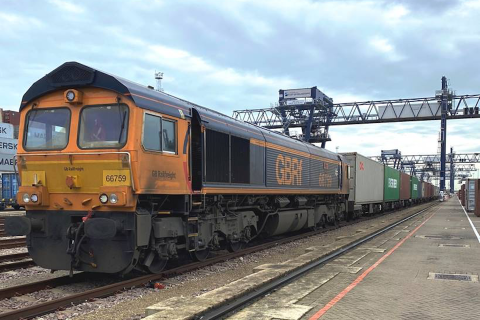Majority of German freight wagons will now run with quiet brake blocks

Die Deutsche Bahn wird die Aktivitäten zum Lärmschutz weiter verstärken und 2016 die Umrüstung ihrer Güterwagen auf leise Bremssohlen deutlich beschleunigen. Bis Ende des Jahres werden 50 Prozent der Flotte von DB Cargo mit der so genannten Flüsterbremse ausgestattet sein, die eine deutliche Reduzierung des Schienenlärms bewirkt.
According to RailWatch, a data company dealing with digitalisation in the rail freight sector, 99 per cent of the German freight wagons are now operating with quiet brake blocks. The conversion of the majority of wagons took place despite the unprecedented conditions caused by the COVID-19 pandemic. As a result, it is considered “a great success for German freight wagon owners”, said Michael Breuer, managing partner of RailWatch.
German freight wagon owners have contributed the most in the process of shifting from road to rail. They have done so, not only by implementing changes that make rail transportation more environmentally friendly but also in terms of attempting to change the population’s perception of trains in general. After all, the greatest struggle is to alter people’s point of view on issues such as noise pollution in urban areas, especially during quiet hours.
Unfortunately, the problem has not been fully resolved yet since foreign wagons do not meet quiet brake standards. However, the situation could change from next year, when Germany will implement penalties for noisy wagons.
Measurement stations
The whole undertaking of keeping train records, with regards to their braking system, has taken place in measurement stations all around Germany. RailWatch specially developed these stations with sensitive sensors and cameras that scan freight trains at full speed. After acquiring the needed data, the company processes them and makes them available on an online portal. Subsequently, customers have the opportunity to see the condition of their wagons in real-time, thanks to a particular feature that detects train block types KK/L and grey cast iron, with great precision.

So far, RailWatch has performed approximately two million measurements in about 200,000 unique freight wagons. Breuer commented on this fact that “the company provides 99 per cent accuracy in the tests that it runs”, while it is already looking to expand its services. It already has four border crossing stations, and two more are about to open: these of Bad Schandau and Emmerich. Besides, the total goal for 2021 is to open around twenty new measurement stations in various places all over Germany.
Legislative framework
Germany has already proceeded in penalising noisy railway undertakings. However, the transition to silent wagons saw some delays because of the pandemic. Consequently, the application of penalties will be in action from next year and onwards.
Nevertheless, an initiative such as that of RailWatch can facilitate a complete overview and resolution of the situation in two ways: first of all, by tracking all unsuitable German wagons and proceeding to their conversion. Secondly, by focusing on the border flows and acquiring exact data of the incoming trains that do not meet the sound standards. Finally, it proved that the wagon conversion process in Germany was not affected that much by the delays and is actually on the right track towards its completion.
You just read one of our premium articles free of charge
Want full access? Take advantage of our exclusive offer





